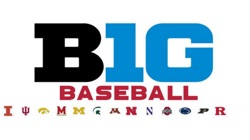Poorly funded, Rutgers’ teams are winning only 26 percent of its Big Ten games and matches. Here’s an inkling as to why.
 Columbus – To get to Bainton Field, one must navigate what amounts to the back lots of the Rutgers University campus. There is no signage telling a first-time visitor that he or she is getting hot on the trail of a ballpark.
Columbus – To get to Bainton Field, one must navigate what amounts to the back lots of the Rutgers University campus. There is no signage telling a first-time visitor that he or she is getting hot on the trail of a ballpark.
Motor down an access road, look to the left and there is a lot of grass, but still no tell-tale signs that a Big Ten baseball team calls this place home.
Where are the light towers? Where is the concrete and steel grandstand?
Then one makes a left hand turn on to a slanted parking lot of stone and gravel and the patch of ground on which Rutgers has played since 2007 is off to the north.
At first, you think it just has got to be the practice field. There is no press box and there are no concession stands or restrooms. Aluminum bleachers sit no more than 700 people.
Take a walk behind home plate, though, and there it is stamped in white letters in plain English on the artificial turf for all to see: Bainton Field.
This isn’t a wisecrack: It looks like a pretty nice high school field.
Ron and Pat Bainton, who are said to be the Scarlet Knights’ only fans in the state of Nebraska, ponied up $1.25 million to break ground for the place. At the time, it was the largest one-time cash gift to the Rutgers athletic department from living donors.
Did they get bang for their bucks, or did they get kicked in the seat of the pants?
Ask anyone – spectators, players, coaches and umpires – who has had to take a deep breath and go into one of the many port-o-potties.
Ask anyone who is parched. There are no drinking fountains and the only water available is from a vending machine. You must stand in mud to make your purchase because the ice machine leaks all over the place.
Ask anyone with a grumbling belly who would pay double for a small bag of greasy potato chips.

Bowlerstore.com, in Versailles, Ohio, is a proud sponsor of Buckeyes baseball on Press Pros Magazine.com.
Bainton Field is considered to be the worst baseball facility in the Big Ten by a tape-measure home run.
The university is scheduled to begin construction of the $3.3 million, 22,500 square foot Fred Hill Training Complex between the baseball and softball fields.
But the field isn’t scheduled to get nada. You feel badly for the baseball support staff and coach Joe Litterio. You feel awful for the players.
This might be the only artificial turf in the country with bad hops.
Then you ask out loud: Does this university belong in the Big Ten?
In 2014, Rutgers came aboard as the 14th team in the conference right behind Maryland. It was an immense move for the university leaving the American Athletic Conference, which looks a lot like the old Conference USA.
This hasn’t been such a good deal for the Big Ten. In the last four-plus academic years, the Knights’ 24 athletic teams have a combined winning percentage of 26 in conference games and matches.
According to NorthJersey.Com, the Rutgers athletic budget is $93 million this school year. Top dogs Ohio State and Michigan had budgets of $221 million and $185 million, respectively.
Rutgers’ greatest source of facilities start-ups, upgrades and maintenance comes largely from private donations. That total was $7 million in 2017. Ohio State and Michigan were at $38 million apiece.
What makes matters worse is that the university will reap only $23.8 million in Big Ten disbursements this school year, whereas the other schools in the conference will get $50 million.
Rutgers won’t get full disbursement until 2027. It did receive $48 million in advance in 2014.
Big Ten commissioner Jim Delany, 70, forever will be remembered as the man who turned the conference into a bullet train with his brilliant money moves. Other conferences could only drool over the $50 million payday that each school received last year. The Big Ten Network has turned into a powerhouse.

Veteran columnist Mark Znidar writes the Buckeyes for Press Pros Magazine.com.
Letting Rutgers into the conference, though, looks to be Delany’s folly. He grew up in South Orange, N.J., and yearned for a chunk of the East Coast television market. He was aggressive in getting Madison Square Garden to host the Big Ten men’s basketball tournament, and it was a smashing success.
But remember that the name of the game in the New York-New Jersey area is professional sports. It’s the Yankees, Mets, Giants, Jets, Nets, Knicks, Rangers, Islanders and Devils around here.
Rutgers athletic program looks like the fictitious New York Knights baseball team in “The Natural’’ before the arrival of Roy Hobbs.
It’s in way over its head, and Bainton Field is just a small example.
Maybe Delany is thinking the sacrifice for getting a foot in that market was taking on Rutgers for all its warts.
The good part for Ohio State, which won two of three games in Piscataway during the weekend, was that it was only passing through.
It had to make the players appreciate Bill Davis Stadium more, especially when they were standing in line to hit the port-o-potty, or waiting for another bad hop.

